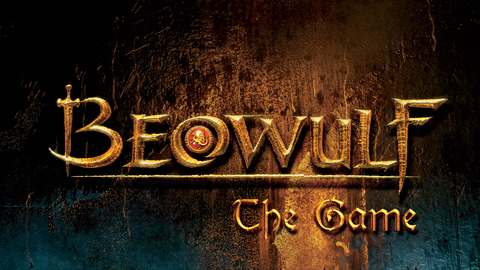Figures based on similarity:
Simile:
An explicit comparison made between two allied things or ideas.
Example: She is red as a rose. In this sentence comparison is made between two unallied objects, she and rose and the point of similarity between them which is the color red; is made by the word as.
Metaphor:
An implied comparison is made between two different things or ideas.
Example: The camel is the ship of the desert. A comparison is made between two different objects, a camel and the ship and the comparison is not explicit but implicit.
Figures based on association:
Metonymy:
This figure of speech consists of the substitution of the name of one thing with that of another, both being loosely associated.
S – Symbol or sign is used for the thing signified. Example: The miter wields powers. Here the term bishop has been substituted by its symbol of miter.
I – The instrument or organ is used for the agent. Example: The pen is mighty. Here the writer has been substituted by his instrument, the pen.
A – Author is used to denote his work. Example: I have read Milton. Here, Milton’s works have been substituted by the author.
P – Place of production of a thing is used to denote the thing itself. Example: A beaker of warm south. Here wine made in Southern Europe has been substituted by its place of origin, south.
C – Container for the thing contained. Example: Socrates drank the fatal cup. Here the contents of the cup are substituted by the container itself.
E – The effect replaced by the cause or vice versa. Example: i) He walked along the shades. Here the effect which is the shade has been used in place of trees, which is the cause. ii) Sorrow fell from her eyes – The cause of tears, sorrow has been replaced by the effect.
N – The name of the passion used for the object inspiring it. Example: Come in, love. Here, the object of love is replaced by the passion itself. Act for the object inspiring it. Example: Here comes the scoff of the town. Here the object of scoff is replaced by the act itself.
Synecdoche: In this figure of speech one thing is substituted with another intimately associated with it.
P – A part (species) is used for the whole (genus). Example, i) The coffin enclosed his breast – here the breast, a part of the body is used to denote the whole body. ii) Silver and gold I have none – here riches are denoted by silver and gold.
W – Whole for the part. Example, i) India lost the cup. Here the Indian cricket team a part of the nation is denoted by the whole nation, India. ii) Owen died in action. Here, action the genus is used to denote the specie, battle.
A – Abstract quality employed to denote the concrete. Example – Out of humanity’s reach. Here man is denoted by the abstract humanity.
C – Concrete for the abstract. Example, Her cheek had two steady roses. Here, the concrete roses is used for the abstract rosiness.
I – An exemplary individual used to denote the class he represents. Example, He was a Caesar. Here, Caesar stands for class of great heroes.
M – Material for the thing made. Example, He was dressed in silk. Here silk clothes are denoted by the material silk.
Transferred Epithet:
This figure shows a dislocation or transfer of an epithet from its proper subject to another associated with it or accompanying it. Example, He walked a weary way. Here the way isn’t weary but the person who is walking on it is.
Figures based on contrast:
Antithesis:
Contrasted words or ideas are placed together in a balanced form for the sake of emphasis. Example, United we stand, divided we fall. Here, the opposing ideas of unity and division are placed together to make the final idea more attractive and also to emphasize the value of unity.
Epigram:
In this figure of speech, there is a shocking contradiction in the apparent meaning of a statement but there is an underlying significance. Example, Failures are the pillars of success.
Oxymoron:
In an oxymoron, two contradictory words or ideas are juxtaposed for a striking effect. Example – glimmering darkness.
Climax:
An artful arrangement of words and ideas are arranged in ascending order of importance. Example, I came, I saw, I conquered. Here I came, the least important idea is introduced first, and I conquered is the most important idea is introduced in the end. The I saw stands in between. Thus we see that the ideas are placed in such a way that the least impressive comes first and the most impressive come in the end for an artistic effect.
Anti-Climax:
This figure of speech consists of an arrangement of a series of words or ideas in such a way there is a sudden fall from the lofty to the mean thought in order to excite laughter and ridicule. Example, He lost his wife, children, and dog. In this sentence, we see an anti-climax because there is sudden descent from the lofty to the mean for comicality’s sake.
Condensed Sentence:
Different thoughts and ideas are condensed in one sentence with the help of a single verb to arouse a sense of incongruity for a comical effect. For example, He was inflamed with bad passions and worse whiskey. Here the word inflame is used to join bad passions and whiskey together. The union seems highly incongruous and is comic.
Figures based on imagination:
Personification:
Nature or an inanimate object or an abstract idea is invested with the attribute of a living being. For example, Fortune is merry. Here, the abstract idea of fortune has been given a human attribute of feeling merriment.
Personal Metaphor:
A personal attribute is given to an element of nature in a manner that implies a comparison with a living being. It is a personification, but only of the object of nature. For example, thirsting flowers.
Pathetic Fallacy:
Nature is given the attribute of by representing it as showing interest in human action, either through sympathy or antipathy. The sun blessed the prince. Here the sun is given the attribute of a living being by showing it to be interested in a human being.
Apostrophe:
This figure of speech consists of a short impassioned address made to nature, an inanimate object, or an abstract idea, or to a dead or absent person, imagining the same to be living or present. For example, O luxury, thou curst by Heaven’s decree. Here, an address has been made to Luxury in an emotional way in which it has been considered as a living object.
Vision:
An absent or imaginary picture is vividly presented.
Hyperbole:
A hyperbole consists in magnifying a thing or idea beyond its natural bound. For ex, his tale could cure deafness.
Figures based on indirectness:
Innuendo:
In this figure of speech, a thing or idea is hinted instead of being plainly stated with the intention of hurting one’s character or reputation. For example, He has been treated by four doctors but he is still alive. Here the generic idea that doctors are usually incompetent at their profession has been hinted at with the aim of maligning the image of doctors.
Irony:
The contrary of what is meant is stated and the purpose is to hurt some person or persons. Example, Such a fine friend you were to forsake me in trouble. If taken literally, the friend is being praised but in reality, the opposite of what is stated is meant for dramatic effect with the aim of insulting the person in question.
Periphrasis:
This figure of speech consists of expressing a thing, statement or idea in a round-about way for beauty’s sake. For example, the reference to the rainbow as the multi-colored bow is an instance or periphrasis.
Euphemism:
A harsh or disagreeable statement is softened down and expressed in a pleasing way. Example, he passed away – the harsh statement of death here is not stated directly and is referred to as passing away, the latter being softer on the ears and more sensitive.
Figures based on sound:
Pun:
The duplicity of sense is created under the unity of sound. For example, The daughter’s will was trampled by the father’s will. In this we see a play on the words ‘will’, them being identical in sound but different in meaning. The first will means desire and the other means testament. The same sound then suggests two meanings.
Onomatopoeia:
The sound of a word echoes its sense. Murmuring Brook – this sound of flowing water echoes the sense that as the brook flows, it creates that sound. Here the word murmuring corresponds to the total sound effect produced by the brook.
Alliteration:
The same letter, syllable or sound is repeated at the beginning of successive or nearly successive words. For example – He bravely broached his boiling bloody breast. The letter b is repeated at the beginning of nearly successive words.
Figures based on construction:
Interrogation:
A question is raised but the answer is implied in its very form. Often something is affirmed or denied very strongly in the form of interrogation. When the question is put in affirmative the answer expected is negative and vice versa. Interrogation is employed to express doubts or uncertainties, wonder or simply to express a feeling. Example – If winter’s here, can spring be far behind? Here a question is put to state a fact and that fact is implied in the very question itself.
Exclamation:
An expression of emotion or desire is introduced generally by an interjection or by the word oh, how, what or the like. Example, Oh lift me as a wave! – Here an emotion is introduced by the interjection, Oh and there is an exclamation mark as well.
Chiasmus:
There is an inversion in the order of the words or phrases when repeated or subsequently referred to in the same sentence. Example – Beauty is truth, truth beauty. The order of the words, Beauty is truth is inverted here, when repeated a second time in the same sentence.
Zeugma:
One verb is used to connect separate nouns, for each of which a separate verb could have been applied for the sake of brevity and emphasis. Example – Hide your wrong and also your revenge. Here we see that the same verb hide has been used to serve two nouns, wrong and revenge, each of which needs a separate verb.
Hendiadys:
Two nouns are joined together by the conjunction and in such a way that one of them plays the role of an adjective. Hence this figure of speech conveys a complex idea which would originally get conveyed with the help of a noun and a qualifying adjective. For example – She drew audience and attention. In this sentence, the two nouns, audience, and attention are joined together with the conjunction and, in which the noun attention has adjective like function. Hence the complex idea of attentive audience is conveyed through the joining of these two nouns.
Litotes:
A strong affirmative idea is presented by the denial of its opposite. For example – He is no fool. Here the affirmative idea that the subject is wise has been presented by denying the statement’s opposite.
Hyperbaton:
There is an inversion of the regular grammatical order or words in a sentence to secure emphasis. For example – Round many western islands I have been. Here the normal grammatical order “I have been round many Western islands” has not been adhered to but has been inverted for the sake of emphasis.
Palilogia:
In this figure, there is the simple reiteration of the same word or words in a line or sentence. For example – O earth, O earth, O earth, hear the voice of the dead. Here, the words O earth have been repeated three times in the same sentence hence this is an instance of Palilogia.
Epanaphora:
There is a reiteration of the same word or words at the beginning of successive lines, clauses or sentences.
Antistrophe:
Reiteration of the same word or words at the end of successive sentences, lines or clauses.
Asyndeton:
The omission of connecting conjunctions constitutes this figure for the sake of vividness and energy.
Polysyndeton:
Increased emphasis is gained by increased use of connecting conjunctions.
Aposiopesis:
The writer or speaker suddenly stops or leaves a sentence unfinished.
Paraleipsis:
A speaker or author professes to pass over something that he really wishes to say or emphasize.
Prolepsis:
Reference is made to something as done before it is actually done.
Tautology:
A statement that has already been made is repeated in different words or expressions.
Some online learning platforms provide certifications, while others are designed to simply grow your skills in your personal and professional life. Including Masterclass and Coursera, here are our recommendations for the best online learning platforms you can sign up for today.
The 7 Best Online Learning Platforms of 2022
- Best Overall: Coursera
- Best for Niche Topics: Udemy
- Best for Creative Fields: Skillshare
- Best for Celebrity Lessons: MasterClass
- Best for STEM: EdX
- Best for Career Building: Udacity
- Best for Data Learning: Pluralsight
















